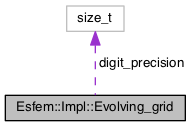|
Evolving surface finite element method
v0.3.0-14-g3598512
Numerical experiments for my papers
|
|
Evolving surface finite element method
v0.3.0-14-g3598512
Numerical experiments for my papers
|
Evolution via a hash map. More...
#include <grid_GridAndTime_impl.h>

Public Types | |
| using | Node = Grid::Deformation::Domain |
| What is a node for us. | |
| using | Nodes_key = std::vector< std::string > |
| List of keys for hash map. | |
| using | Map = std::unordered_map< std::string, Node > |
| The actual map. | |
Public Member Functions | |
| Evolving_grid ()=default | |
| Empty map. | |
| Evolving_grid (const std::string &filename) | |
| Construct grid from dgf. | |
| const Node & | operator[] (const Node &) const |
| Access node. | |
| Evolving_grid & | operator= (const Grid::Vec_FEfun &new_nodes) |
| Get new nodes. | |
Private Member Functions | |
| template<typename It , typename Ot > | |
| void | update_vertices (It first, It last, Ot out, const int dim) |
| Helper for operator=() More... | |
Private Attributes | |
| const Nodes_key | original_vertices |
| The list. | |
| std::size_t | digit_precision {8} |
| Precision of the strings. | |
| Map | vertices_map |
| Hash map. | |
Evolution via a hash map.
I use std::string as key.
Definition at line 98 of file grid_GridAndTime_impl.h.
|
private |
Helper for operator=()
Definition at line 213 of file grid_GridAndTime_impl.h.
 1.8.10
1.8.10